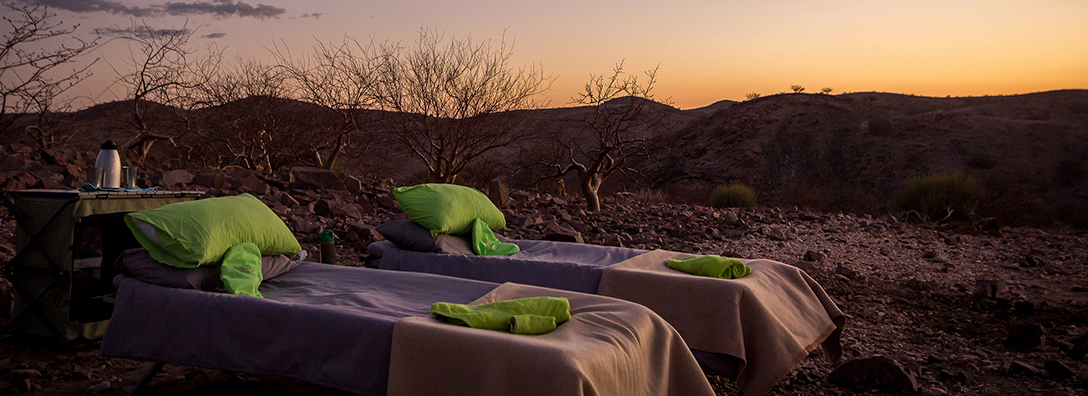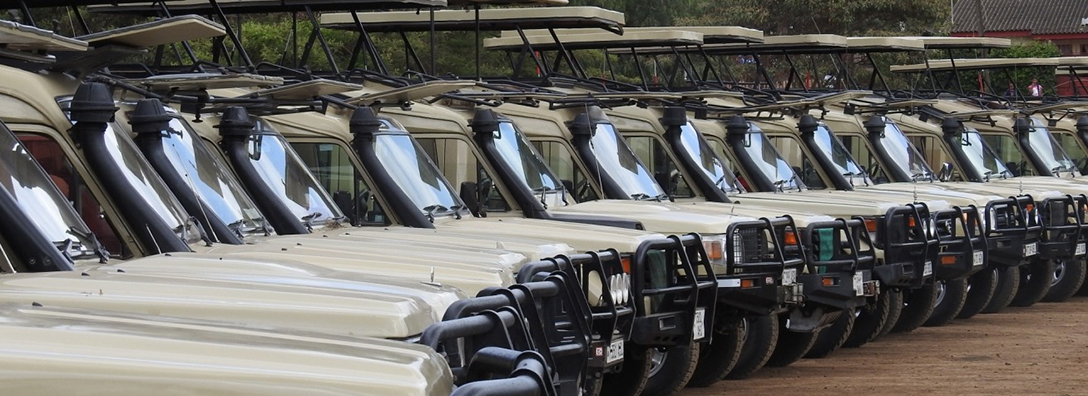Trekking in Mount Kenya has attracted many adventure travelers since the early 19th century. The most hilarious attempt was that made by the Italian prisoners of war who attempted to climb the mountain with a map inscribed on a tin, showing the major twin peaks. Unfortunately they didn¹t make to the top due to hunger.Mt. Kenya National Park is located to the east of the Great Rift Valley, about 175km North-East of Nairobi. The ecosystem lies in Central and Eastern provinces of Kenya. At 5,199m the mountain is the second highest peak in Africa. UNESCO inscribed Mount Kenya as a World Heritage Site. Its described as one of the most impressive landscapes in Eastern Africa.
The Mountain’s original name was “Kirinyaga” from a Kikuyu word meaning a place with Ostrich. Legend has it that the Mountain’s original name was derived from the comparison of the patched peaks resemblance with the black and white plumage of a male Ostrich. The Kikuyu believed that this area of admirable beauty was their god’s domain. It was due to this spiritual belief that they regarded the Mountain as a sacred place. It was also in this same perception that the Kikuyu glorified their god (“Ngai”) as “Mwene Nyaga” implying that they recognized him as the owner of the holy mountain. It was customary to build huts with the doors facing the direction of the mountain so as to face the mountain first thing every morning. As a religious belief, they faced the mountain when praying and offering sacrifice to their god. Visits to the mountain were only made as a pilgrimage to offer special sacrifice to their god, otherwise it was a taboo.
What is it like to Hike Mount Kenya?

Mount Kenya is the only snowcap mountain that straddles the equator. Your visit will be fulfilled by a various kind of attractions. As your target is to hike and explore the afro-mountain habitats, Mt. Kenya will enrich your outdoor knowledge and leave you with a desire to know much about the wilderness. The mountain is regarded as being among the most beautiful volcanic mountain with eye catching undulating and awe-inspiring sceneries. The lush forests pristine with diverse biota the gigantic peaks, picturesque valleys and crystal clear streams.
You should not underestimate Mt. Kenya or other Mountains. Hiking in high places normally yields different effects on individual body physiology. Though related feelings and body reactions are common, specific aspects are expected depending on the altitude and the level of ascend or descend. With the conquer of the summit, the feeling of satisfaction is enhanced and the desire to reach back home to tell the tale of the mountain gets momentum, but it is counteracted by inclined terrain that poses uncomfortable descend. The exhilarating and challenging hike in freezing wilderness and the limited comfort in tents and in huts linger in the memories of every individuals, but are always made charming and adventurous by the thought of the scenic features and the successful conquer of the summit.
The Weather and Climate

The prevailing weather condition usually changes abruptly from clear weather to fogs, snows and mists which are characteristics of all tropical mountains. Though this is the daily trend, the climatically changes are more pronounced in rainy seasons between March-June and October and mid-December. These drastic changes in weather and altitude difference have profound effects on vegetation types and distribution. For instance, on the slopes of the mountain are giant rain forest trees and bamboo forests. As the altitude increases, a reduction in species size and diversity are witness till up the peak where no life exists, except in sheltered parts.
Flora and Fauna

Traversing the various routes provides a closer view of the wide range of flora and fauna; the endemic, diverse and luxurious plant species well distributed up the mountain that add elegance to the Mountain. Alongside these distinctive diversity is an impressive array of forest species of mammals.
Mt. Kenya treks are safe, but preparations must be made to ensure safety. Epics are easier to prevent than to extricate oneself from. A little planning could save yourself and others being involved in unnecessary dangerous situations. There are no absolute medical contra-indications to climbing to high altitude, except for certain cardiac and pulmonary diseases for which affected persons should consult a physician. Good conditioning will allow the climber to enjoy his/her trek at high altitude without being totally fatigued. Major disciplines regarded as mountain norms like;
Acclimatizing adequately: Few mountains in the world give such quick access to high altitude as Mt. Kenya. Fitness is no help; indeed it can even be a handicap, as the fittest tend to push on ignoring the first symptom until they get a very bad dose. A sensible approach to acclimatization can help a great deal. For visitors to the country, it is wise to visit the mountain after spending some time in some of the higher parts of Kenya and not direct from the sea level. A day spent exploring the forest or the heath zone around 1900-2500m can make a big difference as well as being worthwhile in its own kind. A walk around the camp for as long as you can helps also increase the level of acclimatization.
Eating right: The greatest dietary requirements at high altitude is energy intake. A diet high in carbohydrates and supplemented with other foods of high calorific value such as fruits will best prepare the body for the challenging afro-alpine environment. Menus therefore should be meticulously organized with great emphasis on energy content and digestibility at different altitude.
Dressing Right: Be sure you have the appropriate gear for the duration of the trip. Garments of wool and insulated synthetic fibers are highly recommended. Avoid cotton and nylon if you can. If hiking with porter(s), be sure to keep adequate gear in your backpack so that you have what you need, should you become separated during the hike.
Drinking Right: The combined action of strong muscular exertion and strong winds predisposes a hiker to dehydration. It is of utmost importance to replace the lost fluids. To avoid dehydration, your fluid intake should be an average 2-3 liters a day so as to be on the safe side. The following symptoms are the signs for a person suffering from dehydration: - Reduced urine output, puffy skin, production of dark orange urine, reduced mental orientation and headache.
Observing Proper Hiking Habits

The basic rules to be observed by any hiker are:-
- Have all the basic requirements for your day’s hike in your day pack e.g. drinking water, extra warm and water prove clothing, first aid kit, snacks etc. for easy access to them whenever you need.
- Do not force yourself on the strenuous hike if your body feels weak. A wise man will obey his body language.
- Give your body as much rest as possible on the eve of your predawn summit attempt. By the same token increase your fluid intake.
- Do not hurry while on trek. Take your time. Slow but steady pace is preferable, as you don¹t have to stop frequently.
- Drink as frequently as possible as this helps to replenish fluids lost through sweating.
- Advise your guide to stop in case you need rest. Avoid long rest stops.
- Inform your guide about any strange feelings or problems as soon as they occur. This will aid quick action in case of an emergency.
Technical Climbing

The prime attraction for rock climbers and mountaineers are the twin peaks of Nelion (5188) and Batian (5199 m). Below these peaks are a complexity of fields of scree and ice, ridges, walls and couloirs, which offer high standard technical rock and ice routes of about 640 to 1190m in length at an altitude of more than 4420m above sea level. Although accurate grading is impossible due to variable seasonal and meteorological conditions, climbs are graded according to the technical difficulties they pose. About half of the climbs are Alpine Grade V and IV. Under Prime conditions, some of the routes are easier while under bad conditions, a route may be a grade or more harder. There are two major technical rock and ice climbing routes on Mt. Kenya; the North face standard route of Batian and the Normal South East face of Nelion route.
(i) North face standard route of Batian.
This route starts from Kami Hut taking the path leading to the trekkers Summit (Pt. Lenana.) The climbing season for this route is July to September when it takes approximately 10 hours to climb the 1,100 m of a technically grade IV slope. Possible to use it during other months but due to the heavy snow and wet conditions it is harder, Grade V( 5.8 American). It has been done solo for many times but when out of season, though still possible, it calls for more use of crampons and ice hammer especially for those climbers intending to go across the gates of mist¹ route. Care should be taken especially when crossing the Lewis glacier and scrambling to the base. The route has some distinct climbing ropes, which have been left as route markers.
(ii) South East Face Nelion Route: It is most commonly used between January to March when it is designated as grade IV. It starts from Austrian Hut, up Point Nelion across the Diamond couloir and the gates of Mist¹ to Point Batian. It takes 6 hours to climb the 700 m. On the way to Nelion you bypass Howell Hut.
(ii) Ice routes:
Most commonly used ice routes on Mt. Kenya are Diamond Couloir and the Ice Window. The two climbs are approached from the American Camp and Two Tarn hut respectively. Most climbers prefer to bivouac at the base of the Darwin glacier. Their best season to climb is June to October but the weather pattern has been so unpredictable of late and hence predicting the best season for climbing isn¹t accurate. Climbers are advised to contact the Mountain Club of Kenya for an update on conditions.
























